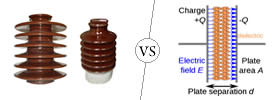Difference between Comma and Full-Stop
Key differences: The basic difference between a comma and a full-stop is that a comma does not end a statement, whereas, a full-stop is used to end the statement.
 Commas are especially used to provide the connection between various elements. The continuity of these elements is maintained by commas. They basically provide a link between the components.
Commas are especially used to provide the connection between various elements. The continuity of these elements is maintained by commas. They basically provide a link between the components.
Those components which are inter-dependent on each-other are separated by commas. Grammatically, comma is used when many items are incorporated together. Many different components can be represented by using the comma punctuation. Comma is also used before the conjunctions.
For example: The numbers 2, 4, 6, 8 and 10 are first five multiples of 2.
Here the multiples of two are represented with the help of commas.
A full-stop is also known as a terminator. They are used to end the statements. If any subject-related topics are finished, then they are ended with the full-stop.

After the full-stop, the letter at the beginning of the sentence is to be written in upper-case. It indicates that the related topic is finished and that the other topic has begun. Full-stop represents the end of any relevant topics. Any statement or a sentence has to be ended with a full-stop. It shows the break of a sentence.
It is also used after any relevant degrees.
For example:
Mr. Smith was good at humanity.
Here the full-stop is used twice, after the Mr. as it’s an abbreviation, and at the end of the statement.
Comparison between Comma and Full-Stop:
|
|
Comma |
Full-Stop |
|
Appearance |
It appears as a single closing question mark. |
It appears as one single dot. |
|
Uses |
A comma in grammar is used to represent various items of the same category. |
A full-stop is used to terminate any sentence. |
|
Role |
Its role is to provide the addition of the components. |
Its role is to conclude the end of any subject. |
|
Presence |
They are present after the varieties of contents. |
It is present after every end of the sentence. |
|
Alternate use |
Comma is also used after the conjunctions. |
Full-stop is also used after the abbreviated degrees. |
Image Courtesy: acfw.com, telegraph.co.uk








Add new comment